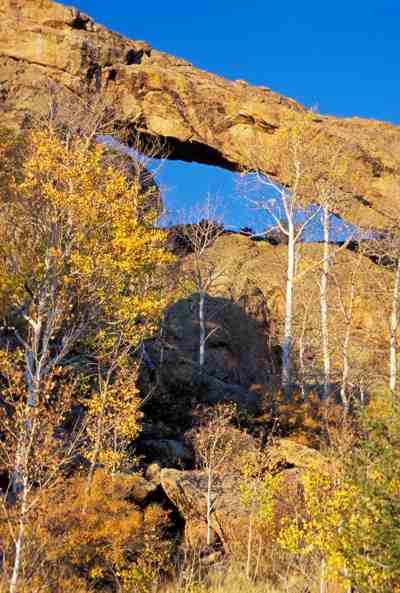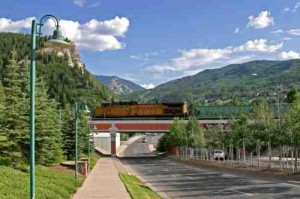Review by Ed Quillen
Colorado – October 2006 – Colorado Central Magazine
Colorado’s Hidden Wonders
by Grant Collier
Published in 2006 by Collier Publishing
ISBN 0-9769218-2-0
USUALLY, IT IS EASY to predict what will lie within a glossy book of Colorado photographs, for our state has some iconic images: the Maroon Bells with turning aspen in the foreground, the old mill powerhouse on the Crystal River, the Great Sand Dunes with rugged Sangres rising behind them, an old mine or two from Red Mountain Pass — we all know them from scores of books and calendars.

But you won’t find such familiar scenes among the hundred or so gorgeous pictures in this book. And it has another quirk for the genre. Almost always, when you see a phrase like “hidden wonders” in the title of a book or magazine article, you can bet that you’re going to get detailed directions on how to reach them and see them for yourself.
But not here. Most of the captions offer no more details than “badlands on the eastern plains” or “tributary of the Animas River.” Those that provide specific places refer to fairly well-known (if not often visited) spots like Wheeler Geologic Area, Pawnee Buttes, or Canyons of the Ancients National Monument.
Thus the photographer who produced this book, Grant Collier, assuages one of my recurring fears: That by producing ever more books and articles that feature hidden, remote, unknown, or secret places, and thereby encouraging more visitation to those spots, we’ll someday run out of “hidden wonders.” Every bit of Colorado will be on the beaten path, and there won’t be any joy of personal discovery.
As for discovery, I had never even imagined that Colorado has so many arches, and Collier has found them from the Front Range to the Utah line, including many in “a remote canyon on the Western Slope that contains the second largest concentration of natural arches in the world,” accessible only “by way of a long, rugged jeep trail and a moderate hike.”
That’s as much guidance as he gives you to those arches. He also offers photographs of a “hidden canyon on the eastern plains of Colorado” where “some of the rock formations have eroded into the shape of giant mushrooms, giving the hiker the feel of visiting a surreal, fictional landscape.”
The scenes in Colorado’s Hidden Wonders come from all over the state, although our mountains and western canyons get the bulk of the attention.
Because so many of the photographs’ locations are unspecific, I found myself examining many pictures for their arrangement and lighting, artistic stuff like that, rather than my usual “I’ve been there” or “I’ll have to go see that the next time I’m in the San Juans (or out on the Plains, etc.).”
Collier gives us much more than arches, of course. There are lakes, waterfalls, canyons, buttes, mesas, spires, rivers, sunsets, dawns, flowers, old cabins and older ruins — all the stuff we cherish about the backcountry of Colorado, exquisitely reproduced in such detail that you keep going back to the pictures, discovering more each time.
The photographer-publisher has an agenda: “In recent years, some once-forgotten lands have been overrun by development, mining, and drilling, while others are threatened by such endeavors. Although these activities can cause irreparable damage to the landscape, there is promise that much of Colorado’s unspoiled scenery can be preserved.”
Collier does his part to help preserve them by not giving detailed directions to every scenic spot, thereby minimizing the threat of “loving a place to death,” while still showing us parts of Colorado that many of us would never otherwise see.



